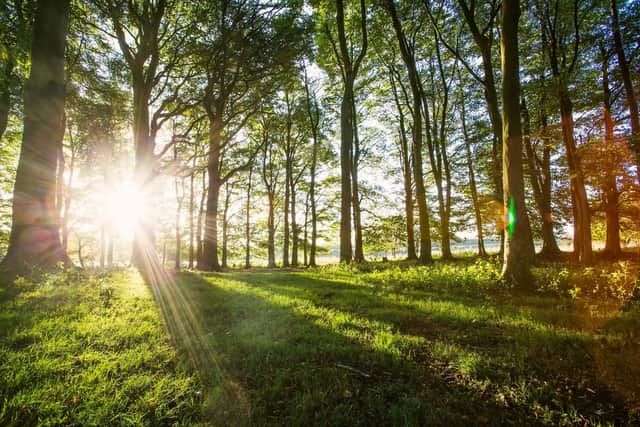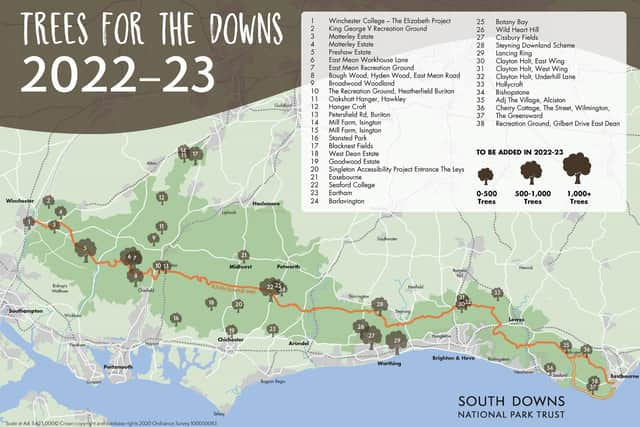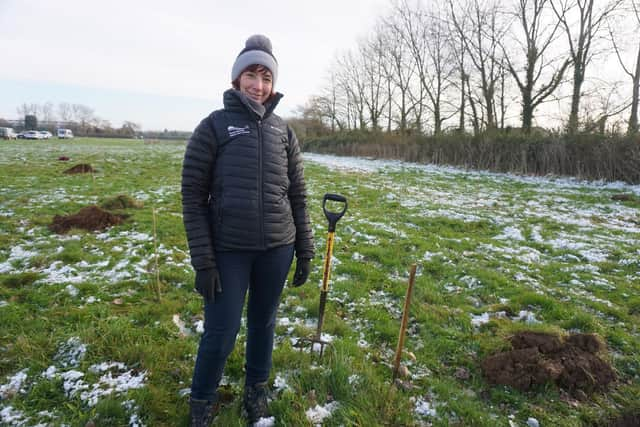Major tree planting under way across Sussex as new research reveals potential to create woodland twice the size of Manchester
and live on Freeview channel 276
To coincide with National Tree Week which began on November 26, scores of trees have been going into the ground at more than 30 sites across the South Downs National Park. Over 12,000 trees were planted last winter, and a further 16,000 are being put into the ground this coming winter, as part of the Trees for the Downs and Queen’s Canopy initiative.
It comes as a new interactive mapping tool has revealed the colossal potential to create even more woodland across the national park which covers large parts of Sussex and parts of Hampshire.
Advertisement
Hide AdAdvertisement
Hide AdThe study covered just over 439,000 hectares and found almost 23,000 hectares is highly suitable for creating new woods – around five per cent of the land area. Of that, around 5,500 hectares lies in the South Downs National Park, while woodlands could be created in other areas, including Areas of Outstanding Natural Beauty, such as High Weald, and urban areas.


The potential new area of woodland – twice the size of Manchester – could store up to 37,667,500 tonnes of CO₂ after 100 years.
The research, led by the National Park Authority, Sussex Nature Partnership and Woodland Trust, has produced a detailed “Woodland Opportunity Map” showing precisely where new trees could be planted, as well as those areas that are not suitable for major tree planting.
As the National Park marks Tree Week, there are other exciting developments. These include the fact that applications are now open for landowners, land managers, community groups, parish councils and schools to apply for tree planting in the next round of Trees for the Downs (2023-2024). A special tree, “The Queen’s Elm”, is also being planted at Seven Sisters Country Park.
Advertisement
Hide AdAdvertisement
Hide AdSo far, almost £200,000 has been raised by the South Downs National Park Trust, the official independent charity for the National Park. The Trees for the Downs campaign hopes to raise £260,000 to be able to plant 100,000 trees in total over the next few years.


The tree planting is restoring those lost to pests and diseases, including Ash Dieback and Dutch Elm Disease, as well as creating new habitat for wildlife and amenity value for local communities. The trees will be a mixture of disease-resistant elm trees and native species, such as oak and black poplar. Sites include schools, farms, recreation grounds and historic parks.
The Trust is working with the National Park Authority’s woodlands team to deliver the project, which is a key strand of the National Park’s ambitious “ReNature” campaign to create new habitats where wildlife can flourish.
Sonia Lorenzo-Martin, who oversees woodlands in the National Park, said: “These life-giving trees are a fitting tribute to the memory of her late Majesty and all her years of public service to the country.
Advertisement
Hide AdAdvertisement
Hide Ad“Trees provide clean air for us to breathe, enrich our soils, provide a vital habitat for wildlife and, crucially, are amazing carbon capturers in the fight against climate change.


“This new research is very significant. It shows that we have the potential to create a major carbon sink in the South East of England that can help spearhead Britain’s fight against climate change. Around a quarter of the South Downs National Park is already wooded, so adding to that even more across the region is a very exciting prospect for our nation’s climate action. Every scheme counts and it could be that we help provide a blueprint for woodland creation that’s replicated across the UK.”
While not formally part of the map, there remains huge potential to create new woodland in areas outside the National Park in Hampshire, including the former Forest of Bere, between Portsmouth and Southampton, and north-west of the National Park towards Basingstoke.
And Sonia added: “Our big motto is ‘the right tree in the right place’. The map will be a key tool for landowners, farmers, local authorities, parish councils and communities to look at where is the best place to plant trees. New trees could, of course, be planted using funds from Trees for the Downs, but there are also several other routes available.
Advertisement
Hide AdAdvertisement
Hide Ad“Our map is based on the best available data but additional information gathering and on-site surveys would obviously be required before any new woodland was created. The most important thing is we now have solid evidence with which to make a real difference and also help join up habitats as part of the ReNature drive.”
The ReNature campaign is looking to create 13,000 hectares of new wildlife habitat in the South Downs National Park, such as woodland, dew ponds, wet meadow, wetlands, hedgerows and wildflower rows. For more information visit www.southdowns.gov.uk/renature/
For more information on the woodland research and map visit www.southdowns.gov.uk/wildlife-habitats/habitats/healthy-woodlands/woodland-opportunity-mapping/
To donate to Trees for the Downs, or to make an application for potential tree planting next year, visit www.southdownstrust.org.uk The deadline for applications is February 28 2023
Advertisement
Hide AdAdvertisement
Hide AdThe tree planting has been made possible thanks to generous donations from the public, as well as support from Aspinal of London, Cinven, Jude’s – a carbon negative B Corp, Nyetimber, South East Water and Southern Co-op. Trees for the Downs started in 2019 and, by the end of this winter, 36,500 new trees will have been planted.
The full list of planting sites for Trees for the South Downs this winter in Sussex:
West Dean Estate, West Stoke
The Leys, Singleton
Goodwood Estate, near Chichester
Barlavington Estate, near Chichester
Eartham Estate, near Chichester
Stansted Park, near Westbourne
Easebourne CofE Primary, Easebourne
Seaford College, Petworth
Botany Bay, Duncton
Wild Heart Hill, Long Furlong
Cissbury Fields, Findon
Steyning Downland Scheme, Wiston
Lancing Ring, Lancing
Sites at Clayton Holt, Clayton, Hassocks
Hollycroft, East Chiltington
Bishopstone
The Village, Alciston
Cherry Cottage, Wilmington
The Greensward, East Dean
Recreation Ground, Gilbert Drive East Dean